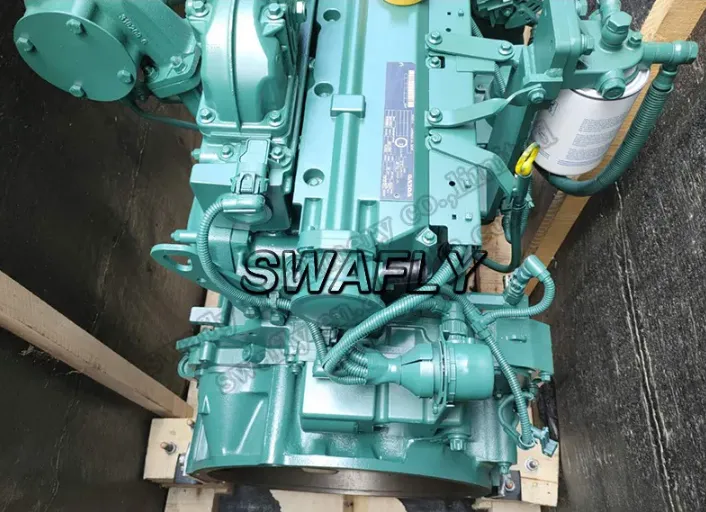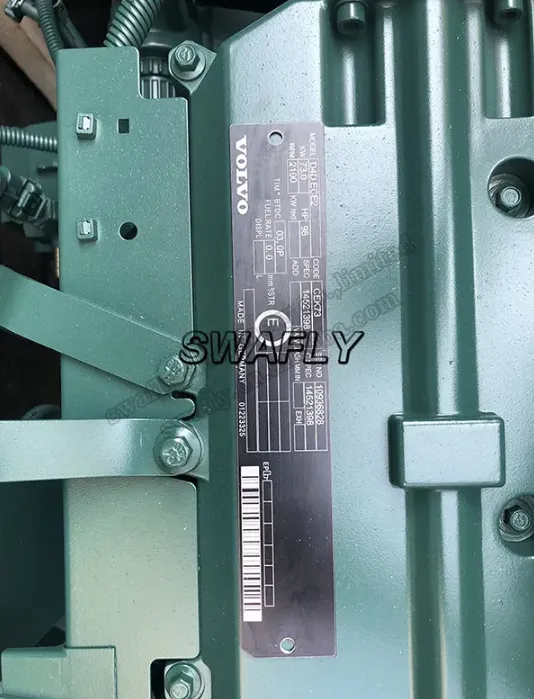Excavator Engine Assy Failure Reason Analysis And Troubleshooting
Time:
2023-12-23
Excavator engine assembly failures can occur due to various reasons, impacting the machine's performance and productivity. Analyzing these failures and troubleshooting the issues is crucial for excavator operators and maintenance personnel to identify, rectify, and prevent future problems.
Excavator engine assembly failures can occur due to various reasons, impacting the machine's performance and productivity. Analyzing these failures and troubleshooting the issues is crucial for excavator operators and maintenance personnel to identify, rectify, and prevent future problems. Understanding the potential causes and troubleshooting methods can help in effectively addressing engine assembly failures in excavators.
Excavator Engine Assy D4D Engine Motor
Common Reasons for Excavator Engine Assy Failures:
1. Overheating:
- Cause: Overheating can result from a lack of coolant, malfunctioning cooling system components (such as the radiator or water pump), clogged or damaged cooling passages, or excessive engine load.
- Troubleshooting: Check coolant levels, inspect the cooling system for leaks or blockages, and ensure proper airflow around the engine. Clean or replace clogged/damaged components.
2. Fuel System Issues:
- Cause: Problems in the fuel system, such as contaminated fuel, clogged fuel filters, faulty injectors, or air leaks, can lead to inadequate fuel delivery or combustion issues.
- Troubleshooting: Inspect and replace fuel filters regularly, check for fuel contamination, and ensure proper fuel pressure and injector function. Address any air leaks in the system.
3. Lubrication Problems:
- Cause: Inadequate lubrication due to low oil levels, oil leaks, or a malfunctioning oil pump can lead to increased friction and engine component wear.
- Troubleshooting: Regularly monitor oil levels and quality, fix any leaks promptly, and ensure proper functioning of the oil pump. Conduct regular oil changes per manufacturer recommendations.
4. Electrical System Malfunctions:
- Cause: Issues with the electrical system, such as faulty sensors, wiring problems, or a failing battery, can lead to engine performance issues or starting problems.
- Troubleshooting: Perform diagnostic tests on sensors and wiring, check battery voltage, and address any loose connections or damaged components.
5. Air Intake and Exhaust Problems:
- Cause: Issues with the air intake system, including clogged air filters or a malfunctioning turbocharger, can affect air supply to the engine. Similarly, exhaust system problems can impact engine performance.
- Troubleshooting: Inspect and clean air filters regularly, check for obstructions in the intake/exhaust systems, and ensure the turbocharger (if equipped) is functioning correctly.
6. Mechanical Wear or Damage:
- Cause: Normal wear and tear, excessive use, lack of maintenance, or mechanical damage can lead to component failures, such as worn-out pistons, damaged bearings, or valve issues.
- Troubleshooting: Perform regular maintenance, conduct thorough inspections for wear or damage, and replace worn-out or damaged components promptly.
Troubleshooting Steps for Excavator Engine Assy Failures:
1. Diagnostic Testing:
- Utilize diagnostic tools and equipment to conduct comprehensive tests on various engine components, including sensors, valves, fuel injectors, and electrical systems, to identify specific issues accurately.
2. Visual Inspection:
- Inspect the engine assembly for visible signs of damage, leaks, loose connections, or worn-out parts. Look for oil leaks, coolant leaks, damaged hoses, or corroded electrical connectors.
3. Fluid Checks:
- Regularly check fluid levels, including engine oil, coolant, and fuel, to ensure they are at appropriate levels and free from contaminants. Address any leaks or irregularities promptly.
4. Filter and Component Maintenance:
- Maintain regular maintenance schedules for replacing filters, such as oil, fuel, and air filters. Inspect and clean components prone to blockages or clogging, such as the air intake system.
5. Consult Manufacturer Guidelines:
- Refer to the manufacturer's guidelines and maintenance manuals for recommended service intervals, troubleshooting procedures, and specific checks tailored to the excavator's engine model.
6. Professional Assistance:
- Seek assistance from qualified technicians or mechanics when dealing with complex engine issues or if troubleshooting efforts do not resolve the problem. Professional expertise can aid in accurate diagnosis and repairs.
Preventive Measures to Avoid Engine Assy Failures:
1. Routine Maintenance:
- Adhere to regular maintenance schedules, including oil changes, filter replacements, fluid checks, and inspections, to prevent premature wear or damage to engine components.
2. Operational Practices:
- Encourage proper operating practices among excavator operators, such as avoiding excessive idling, maintaining optimal engine speed, and minimizing overloading, to reduce strain on the engine.
3. Environmental Conditions:
- Monitor and adapt to environmental conditions, such as temperature extremes or dusty environments, by taking precautions, like ensuring proper cooling and air filtration systems are in place.
4. Quality Fuel and Fluids:
- Use high-quality fuel and fluids recommended by the manufacturer to maintain optimal engine performance and prevent issues related to contamination or poor-quality materials.
5. Regular Inspections:
- Conduct routine visual inspections and diagnostic checks, even when the machine appears to be functioning properly, to catch potential issues early and prevent major failures.
Conclusion:
Excavator engine assembly failures can disrupt machine performance and productivity. Analyzing potential causes such as overheating, fuel system issues, lubrication problems, electrical malfunctions, air intake/exhaust problems, or mechanical wear is crucial. Troubleshooting involves systematic diagnosis, visual inspection, fluid checks, maintenance practices, and seeking professional assistance when necessary. Implementing preventive measures and routine maintenance practices is key to avoiding engine failures, ensuring optimal performance, and prolonging the lifespan of the excavator engine assembly.
More News












